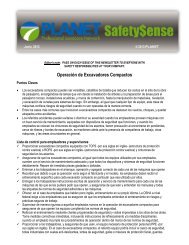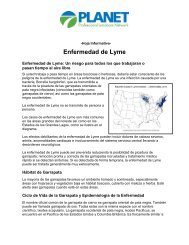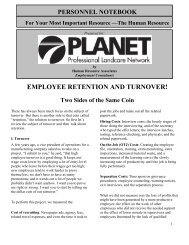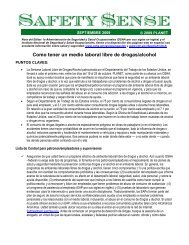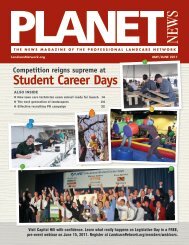Economic Impacts of the Green Industry in the - Urban Forest ...
Economic Impacts of the Green Industry in the - Urban Forest ...
Economic Impacts of the Green Industry in the - Urban Forest ...
You also want an ePaper? Increase the reach of your titles
YUMPU automatically turns print PDFs into web optimized ePapers that Google loves.
Trees reduce exposure to ultraviolet light, <strong>the</strong>reby lower<strong>in</strong>g <strong>the</strong> risk <strong>of</strong> harmful effects from sk<strong>in</strong> cancer and<br />
cataracts (Tre<strong>the</strong>way and Man<strong>the</strong> 1999).<br />
Certa<strong>in</strong> environmental benefits from trees are more difficult to quantify than those previously described, but can<br />
be just as important. Noise can reach unhealthy levels <strong>in</strong> cities. Trucks, tra<strong>in</strong>s, and planes can produce noise that<br />
exceeds 100 decibels, twice <strong>the</strong> level at which noise becomes a health risk. Thick strips <strong>of</strong> vegetation <strong>in</strong><br />
conjunction with landforms or solid barriers can reduce highway noise by 6-15 decibels. Plants absorb more high<br />
frequency noise than low frequency, which is advantageous to humans s<strong>in</strong>ce higher frequencies are most<br />
distress<strong>in</strong>g to people (Miller 1997). Although urban forests conta<strong>in</strong> less biological diversity than rural woodlands,<br />
numerous types <strong>of</strong> wildlife <strong>in</strong>habit cities and are generally highly valued by residents. For example, older parks,<br />
cemeteries, and botanical gardens <strong>of</strong>ten conta<strong>in</strong> a rich assemblage <strong>of</strong> wildlife. Street tree corridors can connect a<br />
city to surround<strong>in</strong>g wetlands, parks, and o<strong>the</strong>r greenspace resources that provide habitats that conserve<br />
biodiversity (Platt et al. 1994).<br />
<strong>Urban</strong> forestry also provides jobs for both skilled and unskilled labor. In 2002, <strong>the</strong>re were 262,242 full-time parks<br />
and recreation employees across <strong>the</strong> nation. Public service programs and grassroots-led urban and community<br />
forestry programs provide horticultural tra<strong>in</strong><strong>in</strong>g to volunteers across <strong>the</strong> U.S. Also, urban and community forestry<br />
provides educational opportunities for residents who want to learn about nature through first-hand experience<br />
(McPherson and Mathis 1999). Local nonpr<strong>of</strong>it tree groups, along with municipal volunteer programs, <strong>of</strong>ten<br />
provide educational materials; work with area schools; and provide hands-on tra<strong>in</strong><strong>in</strong>g <strong>in</strong> <strong>the</strong> care <strong>of</strong> trees.<br />
67



